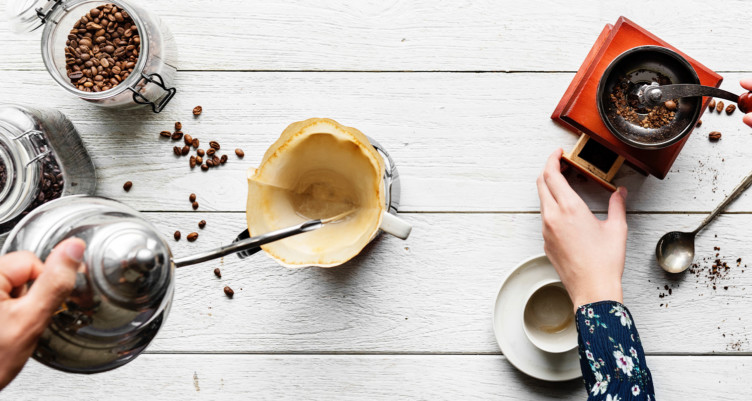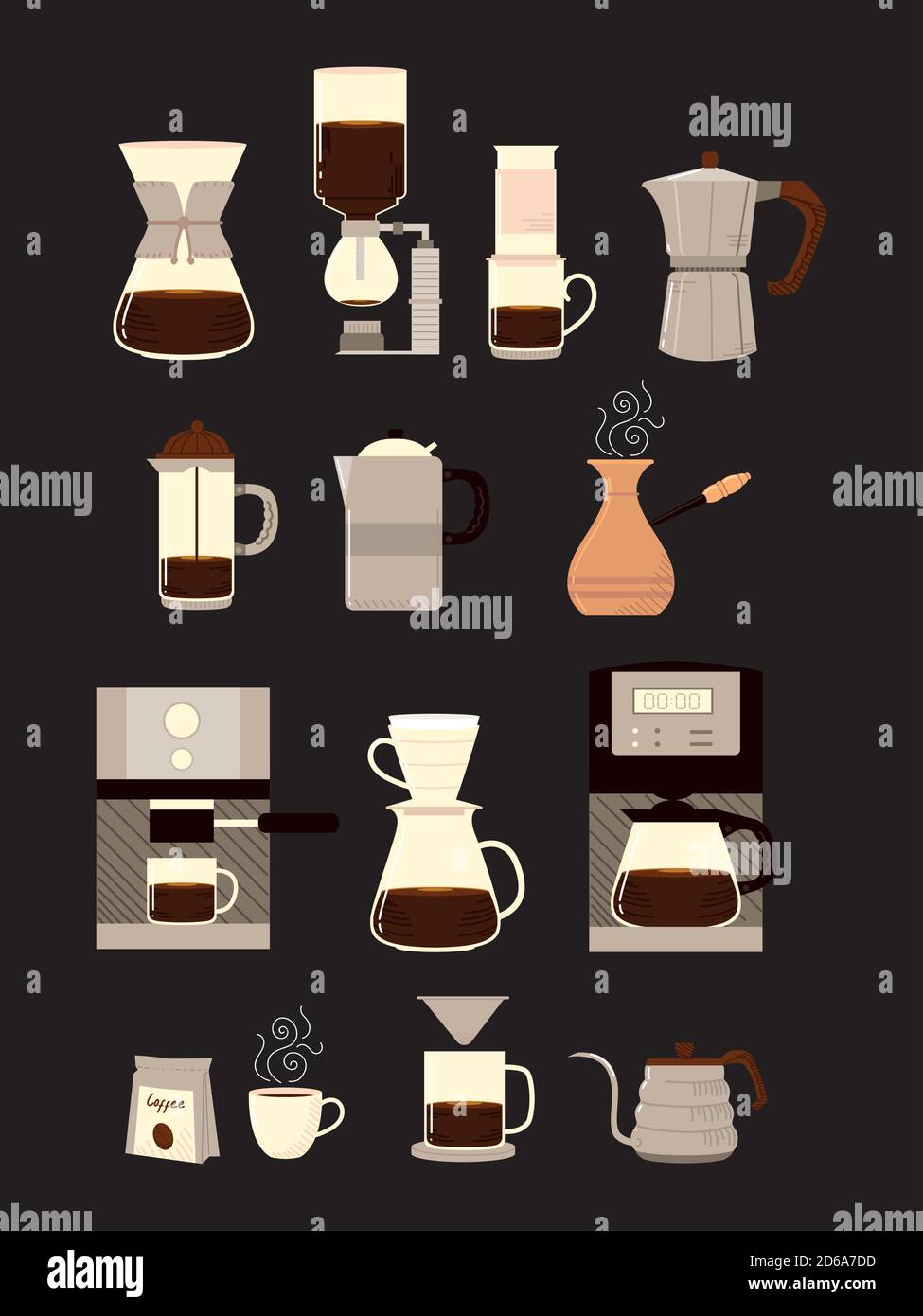A Comprehensive Overview to Various Coffee Brewing Methods You Should Attempt
Wiki Article
The Science Behind Coffee Brewing: Just How Temperature and Time Affect Your Drink
Understanding the scientific research behind coffee brewing exposes that temperature level and time are not simple variables yet pivotal components that dictate the drink's taste account and general top quality. As we discover the nuances of these elements, the question arises: just how can one efficiently balance temperature level and time to attain that excellent mixture?The Chemistry of Coffee Extraction
The chemistry of coffee extraction looks into the detailed processes that change raw coffee beans into the fragrant beverage appreciated worldwide. This change primarily includes the solubility of different compounds present in the beans, which are influenced by elements such as work size, water top quality, and the developing technique utilized.Throughout the developing procedure, hot water functions as a solvent, extracting soluble compounds, consisting of caffeine, sugars, lipids, and acids, from the coffee premises. Each compound adds to the taste profile, fragrance, and body of the last beverage. Acids are liable for intense and tasty notes, while oils add to a rich mouthfeel.
The removal procedure is not uniform; various substances dissolve at various rates. The first stages of developing extract acids and sugars, resulting in an enjoyable acidity, while extended extraction can cause resentment because of over-extraction of undesirable substances. Recognizing these chemical interactions is vital for maximizing brewing methods, as the balance between extraction time and water temperature can substantially influence the overall top quality of the coffee. Eventually, grasping the chemistry of coffee removal is key to attaining a tasty and all-around mug.
Ideal Developing Temperatures
Locating the ideal brewing temperature level is essential for unlocking the full potential of coffee tastes and aromas - coffee brewing methods. Research study suggests that the optimum range for developing coffee lies between 195 ° F to 205 ° F(90 ° C to 96 ° C) Within this variety, the removal procedure efficiently dissolves the preferable soluble compounds in coffee beans, leading to a balanced and savory cupBrewing at lower temperature levels, such as listed below 195 ° F(90 ° C ), may lead to under-extraction, producing a weak and acidic mixture with soft flavors. Alternatively, brewing at temperatures exceeding 205 ° F(96 ° C) can bring about over-extraction, generating a severe and bitter taste as a result of the excessive dissolution of unwanted substances, such as tannins.
In addition, the ideal developing temperature level can differ depending upon the coffee bean kind and roast degree. Lighter roasts frequently profit from slightly higher temperatures to improve their complex flavor accounts, while darker roasts may be better fit to lower temperature levels to alleviate bitterness.
Inevitably, preserving accuracy in brewing temperature levels is important for accomplishing a harmonious equilibrium of flavors, making sure that every mug of coffee supplies an enjoyable sensory experience.
Impact of Developing Time
Brewing time plays a crucial role in establishing the flavor profile and general high quality of coffee. The removal procedure, which affects the taste, aroma, and body of the beverage, is mainly depending on the length of time the coffee premises touch with water. Much shorter brewing times can cause under-extraction, bring about a sour or weak flavor, as not adequate soluble compounds are dissolved. Alternatively, prolonged developing can bring about over-extraction, where unwanted substances are released, leading to a bitter or astringent taste.Optimum developing time differs relying on the technique made use of and the work dimension of the coffee. For example, a French press commonly needs about four minutes, while coffee removal is typically finished within 25 to 30 secs. It is vital to adjust developing time in combination with other variables, such as water temperature and coffee-to-water proportion, to accomplish the desired taste account.
Recognizing the effect of brewing time enables coffee fanatics to fine-tune their brewing methods, ultimately boosting the sensory experience of their mug (coffee brewing methods). With careful view publisher site attention to this variable, one can open the complete potential of the coffee, exposing its distinct characteristics and nuances
Developing Techniques and Their Impacts

For instance, approaches like French press and chilly mixture allow for a longer steeping time, causing a fuller body and durable flavor due to boosted removal of oils and soluble solids. Alternatively, coffee brewing utilizes high pressure and a shorter extraction time, creating a focused shot that emphasizes intense flavors and an abundant crema.
Pour-over methods, such as Chemex or V60, use a more controlled removal procedure, enabling the brewer to manipulate flow price and water circulation, which can boost illumination and clearness. Percolation approaches cycle water via the coffee grounds several times, leading to a stronger, frequently bitter flavor.
Last but not least, the usage of paper filters versus steel filters can also affect the final taste; paper filters normally yield a cleaner mug by trapping oils and fine bits, while steel filters allow more oils to go through, adding to a fuller mouthfeel - coffee brewing methods. Understanding these subtleties can raise the coffee experience considerably
Tips for Perfecting Your Mixture
A well-executed brew can transform also the easiest coffee into an impressive experience. To achieve this, interest to information is crucial. Beginning with top notch, newly baked beans, as their taste account lessens over time. Grind the beans just before brewing to make the most of quality, guaranteeing the grind size matches your brewing technique-- coarser for French press and finer for coffee.Water quality plays a vital duty; usage filtered water without pollutants. The ideal brewing temperature ranges in between 195 ° F and 205 ° F(90 ° C to 96 ° C ) Also warm can scorch the coffee, while as well trendy may under-extract tastes.
Timing is just as important. For immersion methods, steeping for three to five mins is optimal, whereas drip methods commonly take about five minutes. Explore mixture times to locate your recommended stamina.

Final Thought
In summary, the detailed connection between temperature level and time is critical look what i found in the coffee developing procedure. Following optimal developing temperatures in between 195 ° F and 205 ° F, along with precise timing customized per method, ensures the wanted flavor account is attained. Comprehending these scientific principles empowers people to improve their developing techniques, ultimately bring about a more well balanced and satisfying coffee experience. Mastery of these variables is essential for any kind of coffee enthusiast looking for quality in their beverage.Comprehending the science behind coffee brewing discloses that temperature and time are not mere variables however crucial elements that determine the beverage's taste profile and overall top quality. Comprehending these chemical communications is essential for optimizing brewing strategies, as the equilibrium in between extraction time and water temperature can significantly influence the overall quality of the coffee.Brewing time plays a pivotal function in identifying the taste profile and total high quality of coffee. By focusing on these elements-- bean quality, grind dimension, water temperature level, steeping time, and proportion-- wikipedia reference you can elevate your coffee brewing procedure, resulting in a consistently remarkable cup.
In summary, the elaborate connection in between temperature and time is paramount in the coffee brewing process.
Report this wiki page